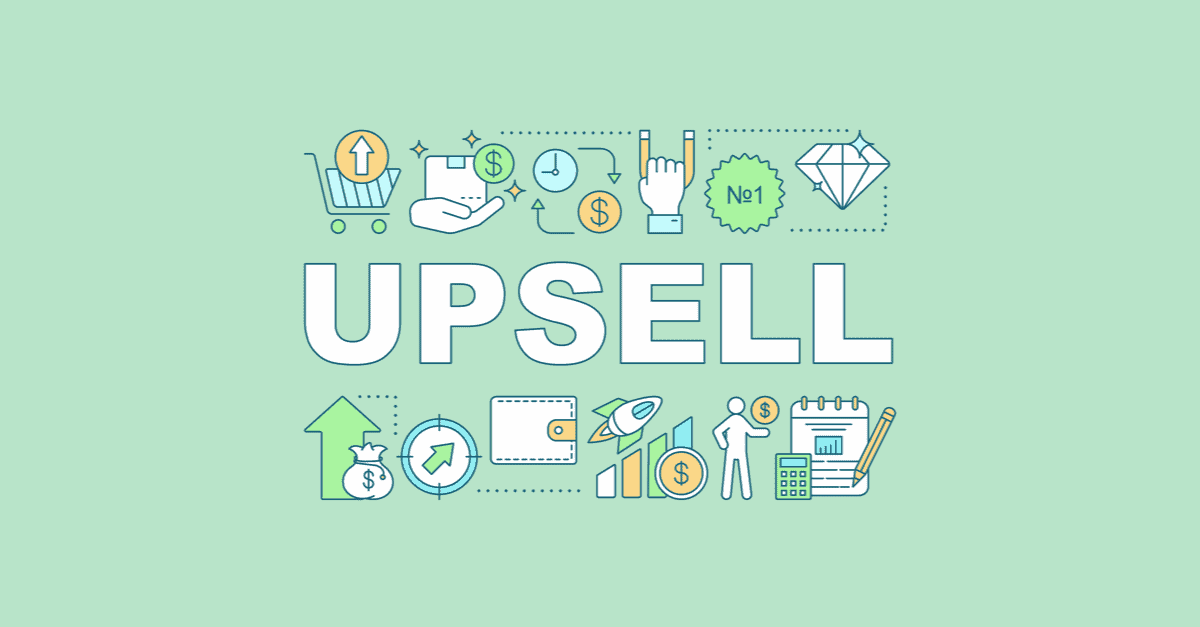
How Up-Selling To Existing Customers Drives Growth
Written By: Colleen Francis
Which Customers Are Up-Sell and Cross-Sell Worthy?
How can you determine who those perfect up-sell and cross-sell candidates are, and what should you do once you’ve identified them?
Drive Business By Up-Selling To Your Existing Customer Base
Up-selling and cross-selling to your existing customer base — rather than focusing most (or all) of your attention on new business development — is the easiest and most efficient way to drive business growth.
Those up-sell and cross-sell opportunities, after all, very often yield quicker sales, higher profits, and improved leverage. This is largely because existing customers know you, trust you, and have displayed a clear affinity for your company’s products and services.
As a result, they typically require less work to convince them to buy more of the products and services you offer.
Why Not Just Stop Hunting For New Business?
So, why shouldn’t businesses simply eliminate new business development initiatives altogether and focus instead on up-selling and cross-selling to their current customer rosters?
Business owners and executives should know the answer to that question (hint: new business development must always be at least a small part of your sales strategy).
And while selling to existing customers might offer the path of least resistance to driving efficient growth, that doesn’t mean you should be trying to sell more products and services to all of your customers.
Don’t Create More Chaos Than Profits
In fact, if you spend too much time up-selling or cross-selling to certain types of customers, you’re probably creating a sales formula that will produce more chaos than profits.
For instance, if you’ve got a few customers who buy several of your products but are perpetual complainers and total customer service headaches, do you really want to keep trying to sell more to those clients?
Probably not. In fact, you may want to do the opposite, and subtly eliminate them from your client roster. Especially if the cost of maintaining and servicing those customers is higher than the money they bring in.
Filter Your High Maintenance Customers Out
Far too many salespeople and business owners forget that no one is putting a gun to their heads and forcing them to sell to certain customers.
We live in free countries, after all, and you can sell to whomever you want.
If a customer doesn’t feel right or they’re more trouble than they’re worth, then you should filter them out. Focus more on the customers who are truly worthy of your time and energy.
Which leads me to a very important question. How can you determine who those perfect up-sell and cross-sell candidates are, and what should you do once you’ve identified them?
Implement A Customer Review System
There are a lot of different ways to go about that process. One of the easiest and best ways to handle it is to implement a customer review system that gauges your new and existing customers’ path to purchase, and their current needs or concerns.
In many ways, it’s simply an intelligence gathering process that will allow you to better understand who your customers are, why they buy, and what their current and future pain points are.
During those engagements with new and existing customers (which should happen within the first 30 days of acquiring new customers, by the way), you might ask questions like:
- What prompted you to buy our product or service?
- Why are you continuing to do business with us?
- Why did you buy more from us in the past?
- How is our product helping you, and are there additional features that could add more value?
Be sure that you don’t simply focus on acquiring positive customer feedback, however. It’s also critical to uncover your customers’ concerns and objections.
That information can help you understand what’s keeping your customers from buying additional products or services from you. It could also tell you why they’re choosing competitors to fulfill a particular need that your product might address. To do that, you might ask questions like:
- What kept you from buying a larger product package from us? Some customers are afraid to put all of their eggs in one basket. If you know that, then you can address that concern and tailor your package to mitigate it.
- How important was pricing in your decision? If a customer reveals that they didn’t buy more from you because they didn’t think they could afford it, you might be able to pitch them on the value of package deals and appeal to their price-first concerns.
- What features do you think our product lacks or what would you change? There might be some features or services that a customer wishes they had, feels would improve their experience, or is unaware that you offer. Ultimately, that could open the door to premium tier up-sell opportunities, or cross-sell packages.
Ultimately, that information will help you strike when your customers are happiest, most interested, or most needy. Quite simply, those types of customers are often the most worthy of your up-selling and cross-selling energy.
Estimate Each Customer’s Growth Potential
Your goal should be to determine who your best clients are, how much they’re spending with you now, which products or services they’re not buying (and why), and what value you could deliver to improve their overall experience.
With that, you should be able to easily estimate each customer’s growth potential, and the net new revenue that they represent.
Say you discover that certain existing customers’ growth potential is low relative to the amount of time and energy you need to invest to maintain them. They’re probably not the best up-sell or cross-sell candidates.
If, on the other hand, you uncover existing customers with unmet needs that you could easily and efficiently fulfill, then you’ve probably found up-sell or cross-sell opportunities that will lead to quicker sales, higher profits, and improved customer leverage.
At the end of the day, what business couldn’t benefit from identifying more of those opportunities?
In Sales EQ, Jeb Blount takes you on an unprecedented journey into the behaviors, techniques, and secrets of the highest earning salespeople in every industry and field and teaches you how to become an Ultra-High Performer. Download your FREE chapters of Sales EQ here.
About the author
Colleen Francis
Colleen Francis, Sales Expert, is Founder and President of Engage Selling Solutions. Colleen Francis…
Get FREE Sales Training Delivered to Your Inbox
Join more than 360,000 professionals who get our weekly newsletter.
Related Articles

Learn Online
Self-paced courses from the
world's top sales experts

Virtual Training
Live, interactive instruction in small
groups with master trainers

Coaching
One-to-one personalized coaching
focused on your unique situation






